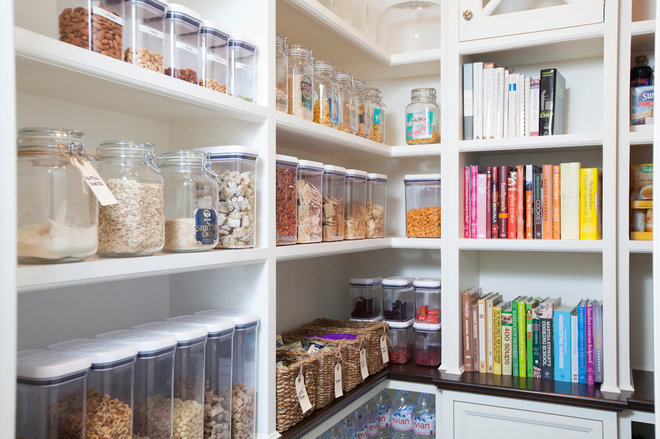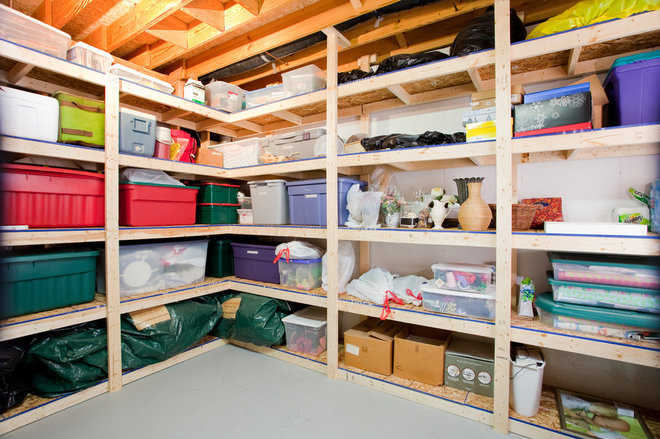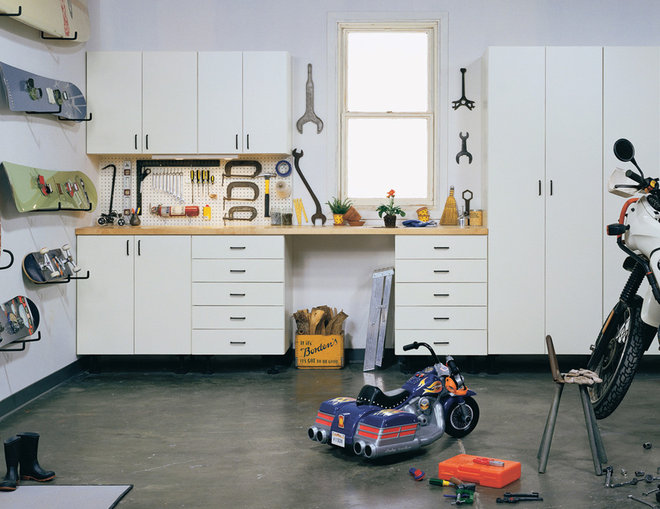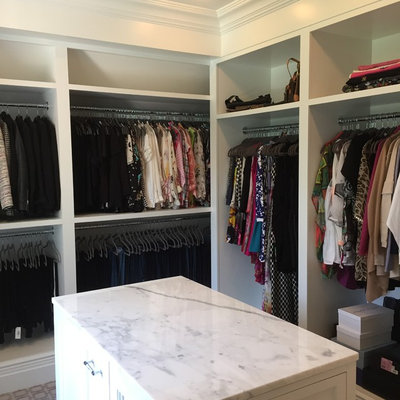Moving is stressful, expensive and time-consuming. As a professional organizer for going on six years, I have yet to meet a client who has looked at me and said, “I love this!” It is the universal misery.
While I understand people not enjoying the process of moving, it can be made much less painful if it’s done in a systematic and efficient way. Here are five areas of your home to declutter before you move. Starting in these areas will greatly reduce the amount of stuff you take with you from your current home to your new space.
While I understand people not enjoying the process of moving, it can be made much less painful if it’s done in a systematic and efficient way. Here are five areas of your home to declutter before you move. Starting in these areas will greatly reduce the amount of stuff you take with you from your current home to your new space.
1. Medicine Cabinet
You won’t believe how much stuff you have in this space that you never use. First, remove every pill box and bottle. Lay them out on your counter and dispose of expired meds. To safely dispose of medicine, check out the Food and Drug Administration’s site or contact your local trash or recycling facility about proper disposal methods.
Once you have cleared out your unwanted meds, place the items you wish to keep in a clearly labeled moving box.
Tip: Use a piece of paper to create a moving key. Label each of your boxes with a number. Then write down the contents of that box next to its corresponding number on the moving key. Every item that is moved from your old home to your current home should go in a numbered box and be on the corresponding list on the moving key.
You won’t believe how much stuff you have in this space that you never use. First, remove every pill box and bottle. Lay them out on your counter and dispose of expired meds. To safely dispose of medicine, check out the Food and Drug Administration’s site or contact your local trash or recycling facility about proper disposal methods.
Once you have cleared out your unwanted meds, place the items you wish to keep in a clearly labeled moving box.
Tip: Use a piece of paper to create a moving key. Label each of your boxes with a number. Then write down the contents of that box next to its corresponding number on the moving key. Every item that is moved from your old home to your current home should go in a numbered box and be on the corresponding list on the moving key.
2. Pantry
Like the medicine cabinet, the pantry is a place of no return! Declutter your pantry by emptying it shelf by shelf. Check expiration dates and staleness. If you are sure you won’t use something and it is still fresh, donate it to your local food pantry. Plenty of people can benefit from the things you no longer want or need.
I recommend decluttering your pantry three days before your move. Leave out necessities to consume before the moving trucks arrive.
Like the medicine cabinet, the pantry is a place of no return! Declutter your pantry by emptying it shelf by shelf. Check expiration dates and staleness. If you are sure you won’t use something and it is still fresh, donate it to your local food pantry. Plenty of people can benefit from the things you no longer want or need.
I recommend decluttering your pantry three days before your move. Leave out necessities to consume before the moving trucks arrive.
3. Basement
Basements tend to be universal dumping grounds. If you have been living in your home for a long time, it may be necessary to go as far as getting a dumpster to unload no longer used items.
Be as honest with yourself as you can about what is essential to take with you. I can’t tell you the number of people who have stored every last Lego and art project from their now-grown children. Remember that saving your most special items is not the same as saving everything.
Ask family members what they would like to keep, and arrange a time far in advance of your moving day for them to come and collect their belongings.
Basements tend to be universal dumping grounds. If you have been living in your home for a long time, it may be necessary to go as far as getting a dumpster to unload no longer used items.
Be as honest with yourself as you can about what is essential to take with you. I can’t tell you the number of people who have stored every last Lego and art project from their now-grown children. Remember that saving your most special items is not the same as saving everything.
Ask family members what they would like to keep, and arrange a time far in advance of your moving day for them to come and collect their belongings.
4. Garage
Like the basement, the garage typically holds tools and household items that are rarely, if ever, used. Moving is the time to ask yourself what value these items hold.
When decluttering the garage, use three large cardboard boxes: Label one “trash,” one “donate” and one “keep.” Use these boxes to help sort what is coming with you from what is garbage and being given away. Using a system to declutter will help you visualize how much you have, and it often helps people feel better about throwing things out and giving items away.
Label the “keep” box with a number, add the contents to your moving list, and you are on your way!
Like the basement, the garage typically holds tools and household items that are rarely, if ever, used. Moving is the time to ask yourself what value these items hold.
When decluttering the garage, use three large cardboard boxes: Label one “trash,” one “donate” and one “keep.” Use these boxes to help sort what is coming with you from what is garbage and being given away. Using a system to declutter will help you visualize how much you have, and it often helps people feel better about throwing things out and giving items away.
Label the “keep” box with a number, add the contents to your moving list, and you are on your way!
5. Closets
If you aren’t someone who declutters on an annual basis, this area of the home may seem daunting, but in truth it’s the easiest. You know what you wear and what you love.
As a professional organizer, I love this place the most in regard to a move. This is the chance to really change the look of your closet.
I recommend that my clients purchase all the same hangers and sort their clothing into categories. I put all the blazers together, for example, and sort them by color. Then all the denim, all the tops and so on. Your closet can actually be completely organized in its old space and moved in wardrobe boxes. This way, your catalog and sorting systems stay perfectly in place if you label your boxes and unpack in order.
If you declutter your closet well before you move, you can use large plastic containers to pack away off-season items. Remember to label those containers as well and add them to your moving key.
If you aren’t someone who declutters on an annual basis, this area of the home may seem daunting, but in truth it’s the easiest. You know what you wear and what you love.
As a professional organizer, I love this place the most in regard to a move. This is the chance to really change the look of your closet.
I recommend that my clients purchase all the same hangers and sort their clothing into categories. I put all the blazers together, for example, and sort them by color. Then all the denim, all the tops and so on. Your closet can actually be completely organized in its old space and moved in wardrobe boxes. This way, your catalog and sorting systems stay perfectly in place if you label your boxes and unpack in order.
If you declutter your closet well before you move, you can use large plastic containers to pack away off-season items. Remember to label those containers as well and add them to your moving key.
www.teambluesky.ca





No comments:
Post a Comment